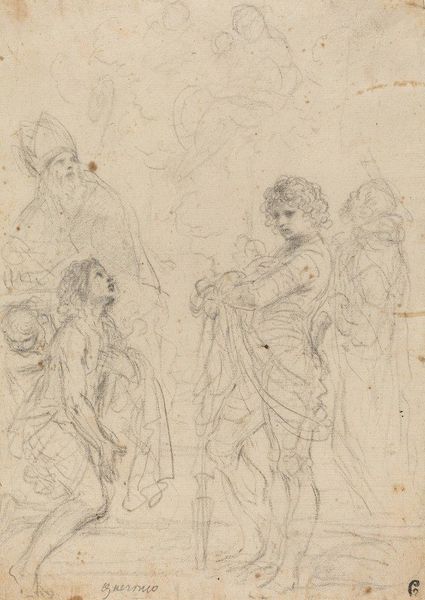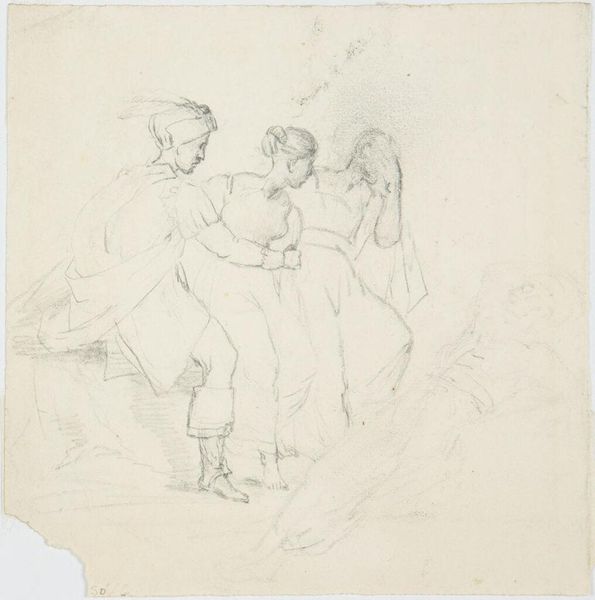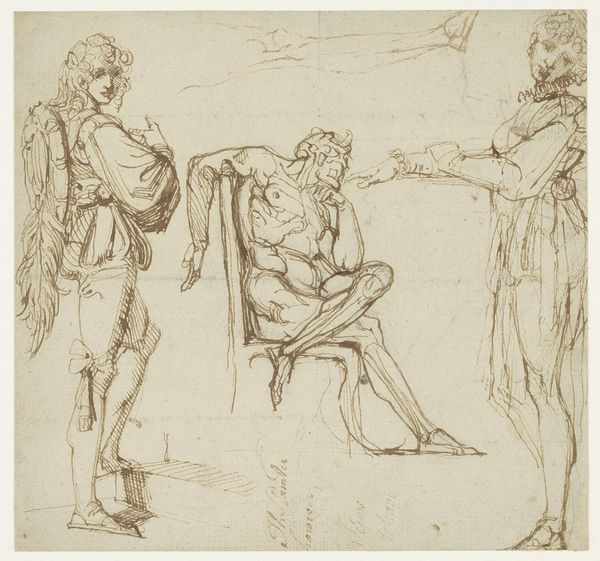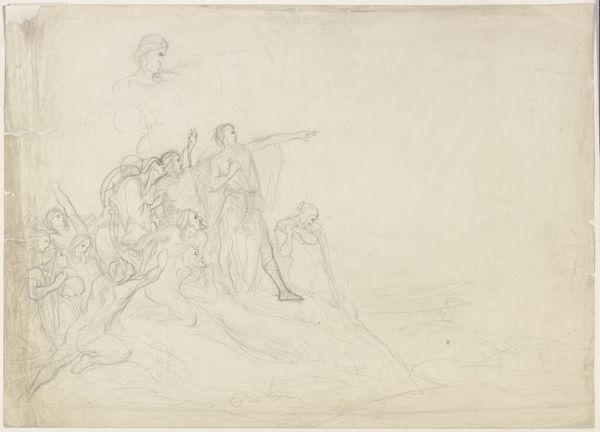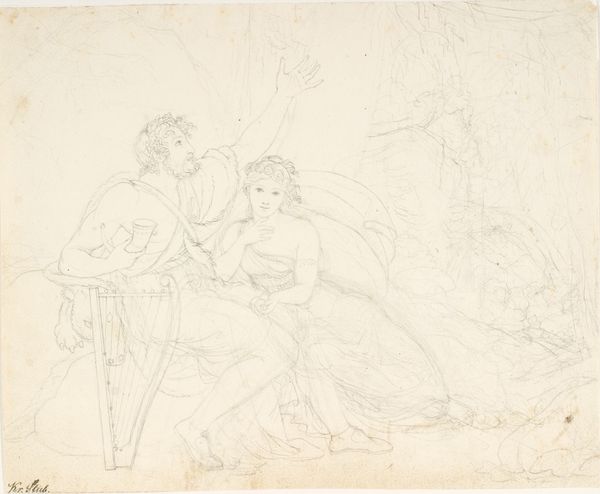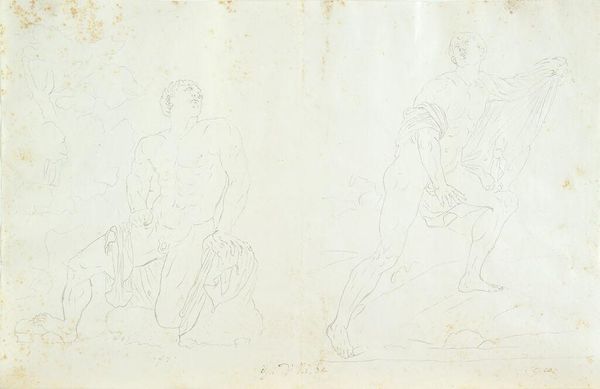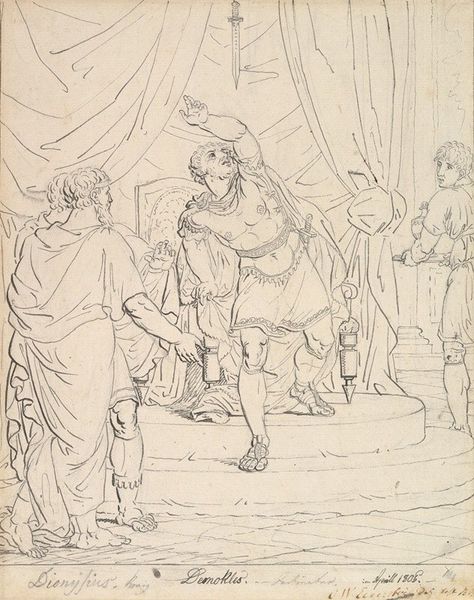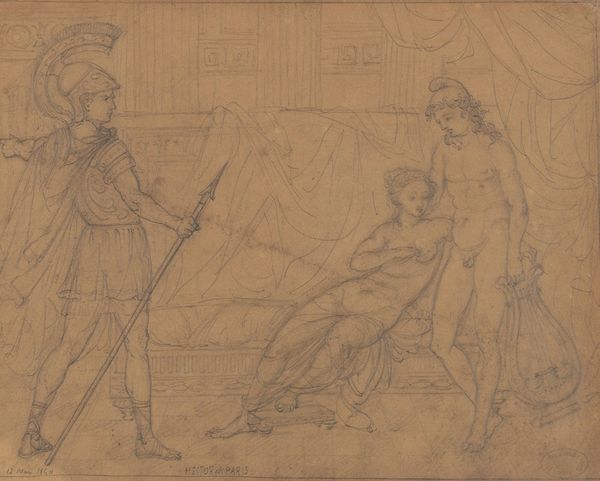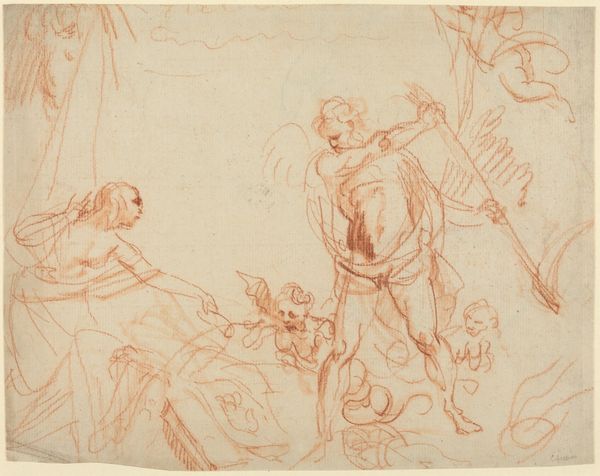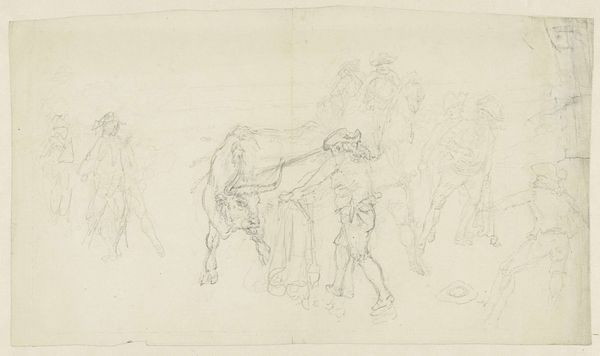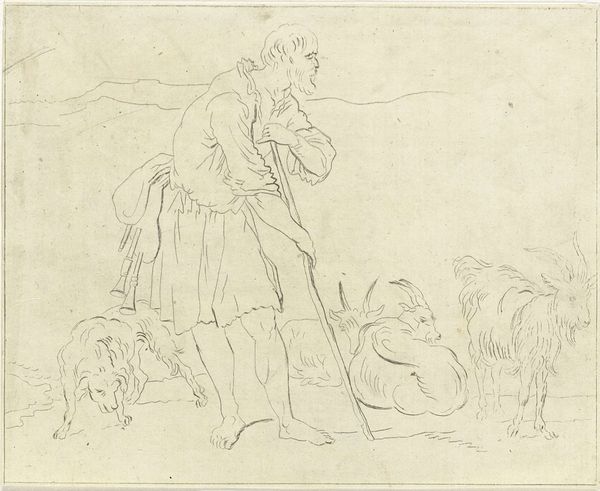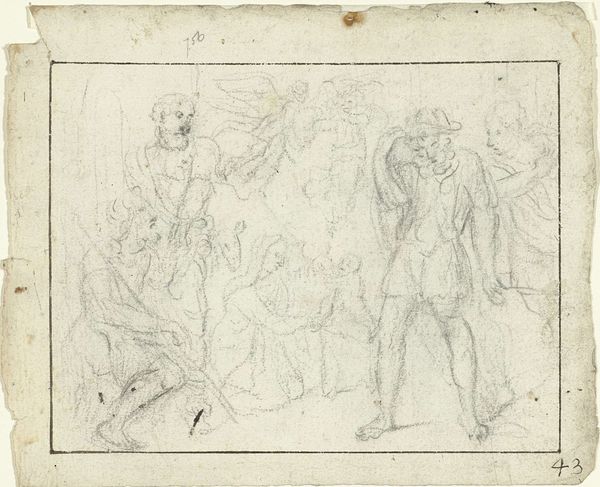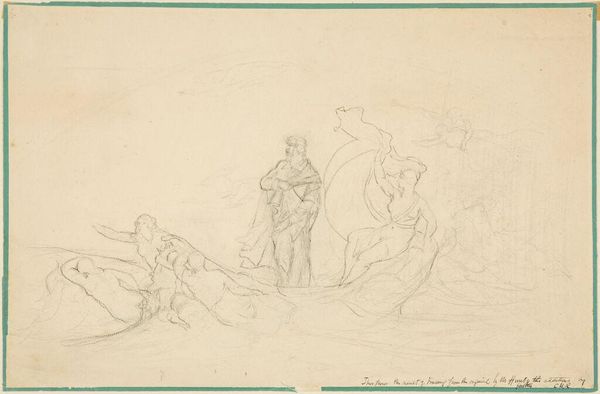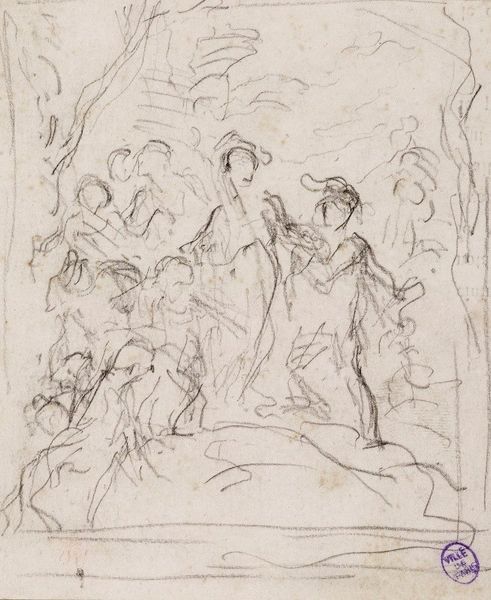
drawing, pencil
#
pencil drawn
#
drawing
#
allegory
#
narrative-art
#
figuration
#
pencil drawing
#
romanticism
#
pencil
#
history-painting
#
academic-art
Copyright: Public Domain: Artvee
Editor: This drawing, "Hercules Between Virtue and Vice," rendered in pencil by Eugène Delacroix between 1849 and 1852, feels surprisingly unresolved for such a monumental theme. What jumps out at you, considering Delacroix's famous paintings? Curator: This preparatory drawing is interesting for precisely those material and process reasons. Notice how Delacroix deploys the immediacy of pencil, normally associated with sketches and underdrawings, for such an important allegorical theme. Does this democratize the making, perhaps questioning traditional boundaries of history painting? Editor: That’s fascinating. So, you are suggesting that by using pencil, a humble material, Delacroix is making a statement about production itself? Curator: Exactly. Think about the accessibility of pencil versus the time and resources required for oil paints, the usual medium for historical narratives. It makes you wonder about the intended audience. Was Delacroix thinking about a broader viewership? About accessibility in how the art is made? Editor: Hmm, so the choice of pencil democratizes art. Interesting point! Considering Romanticism often leans into grand narratives and powerful heroes, the medium somewhat undercuts those lofty ideals in this drawing, making a connection to the world through accessible materials. What's your thinking? Curator: That's precisely my point. The materiality forces us to consider who produces art, how, and for whom. How do we see it as both a sketch but also the finished work? Does this affect our consumption of art? The choice of materials has political weight, don't you think? Editor: Definitely. I hadn’t considered how the accessibility of the materials could challenge those boundaries and make art production less of a mystery, something ordinary people could engage with, not just the elite. Thank you. Curator: My pleasure! Looking closely at process really opens up avenues of understanding the intentions and assumptions that are interwoven into even the most seemingly traditional subjects.
Comments
No comments
Be the first to comment and join the conversation on the ultimate creative platform.
